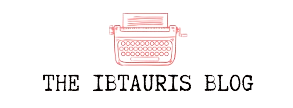Alana Jelinek reflects on the background of her new book, “This is Not Art,” by emphasizing that art does not serve as political action or education, nor does it exist to improve the world.
Encountering Activism: A Reflection On A Conference Presentation
During the 2010 Association of Art Historians conference in Glasgow, I delivered a paper titled, “I used to think I was an activist and then I met some.” In attendance was Liza Thompson, the commissioning editor for visual culture at I.B. Tauris, who observed as controversy unfolded around her.
When presenting my paper, I remained oblivious to its impact, accustomed to encountering tense situations and challenging questions. However, I was keenly aware that my paper challenged established orthodoxies within the art world, particularly those influenced by the Frankfurt School regarding the relationship between culture and the role of politically or socially engaged artists.
I recognized this as sacred territory, having previously adhered to these beliefs in my doctoral thesis submitted in January 2008. While I aimed for originality in my research, I was cautious not to delve too deeply into the well-trodden ground surrounding art and activism.
You Might Like: Landscare
Catalyst For Digging Deeper: A Reflection On An Activist Collaboration
In 2009, my involvement with PLATFORM marked a pivotal moment that spurred me to delve deeper into the intersection of art and activism. Asked to facilitate an event at Arnolfini Gallery in Bristol, I found myself in a unique position as a mediator between the realms of art and activism.
Although I wasn’t invited to participate as an artist or curator, my dual experience in both worlds made me a bridge-builder. This diplomatic role emerged unexpectedly, highlighting the unforeseen necessity for such mediation in a collaboration that surprised the PLATFORM members and the Arnolfini Gallery staff.
Reflecting On Cultural Differences Between Art And Activism
In the art world, there was a prevailing belief among those who identified as politically, socially aware, or ethical that artists were inherently activists, blurring the lines between the cultures, knowledge, and values of art and activism. This assumption persisted even during collaborations like the one at Arnolfini Gallery.
However, my experiences working with real-life activists revealed significant cultural differences between the art world and activism, despite mutual admiration for each other’s work. These disparities prompted me to deliver a paper in 2010 that delved into these differences after extensive reflection and theoretical exploration.
Contrasting Views On Theories of Power: Activists Vs. Artists
One of the intriguing ironies that still amuses me is the divergent relationships activists and artists maintain with theories of power. While art students of my generation immersed themselves in Marxist theories of power and the relationship between power and culture, activists often lacked familiarity with Marx, the Frankfurt School, or any other theories of power. In fact, many seemed unaware that such theories even existed. Their educational backgrounds appeared distinct from artists of the same generation, with only a few exceptions.
Without exploring the origins of their understanding of power, activists typically believed that power was concentrated in the hands of a few to the detriment of the majority, with mass culture perpetuating and reinforcing this unjust state of affairs. This viewpoint, reminiscent of George Orwell’s “Animal Farm,” contrasted sharply with artists’ perspectives. Despite the emphasis on theory in art schools, including works by theorists like Derrida, Barthes, and Foucault, artists tended to adopt a similar understanding of power as activists. However, the art world often regurgitated these theories without fully digesting them, leading to a disjunction between theory and practice.
Rethinking Art’s Social Role And Power Dynamics
The prevailing norms and orthodoxies within today’s contemporary art world inadvertently uphold neoliberal values. Meanwhile, artists often engage in superficial or misguided activism based on outdated and improbable power models. I am hopeful that, instead of mindlessly replicating these patterns, artists can collectively shift towards creating art that is genuinely engaging and fulfills its potential social role.
What interests me is the relationship between artists and power, particularly how we embody and enact power within our own interactions and in relation to the broader social landscape.
Distinguishing Art From Activism
I keenly interest myself in art and politics, though my perspective differs from that of traditional activists or political parties. While I continue to admire the work of PLATFORM and recognize its significance, I firmly assert that they are not artists. Art fundamentally differs from activism, and while creative activism may be inventive, it does not qualify as art.
Despite widespread confusion equating art with creativity, they are fundamentally distinct concepts. This confusion contributes to art’s susceptibility to adopting neoliberal values, as capitalism itself is inherently creative.
I have come to realize that in societies that prioritize freedom and equality, art holds greater significance than activism. This importance is even more pronounced in societies where these values are not upheld. When I refer to art in this context, I highlight its role as an expression of individual differences, which serves as a crucial prerequisite for meaningful political engagement.
Read: New Guinea Tribesmen


